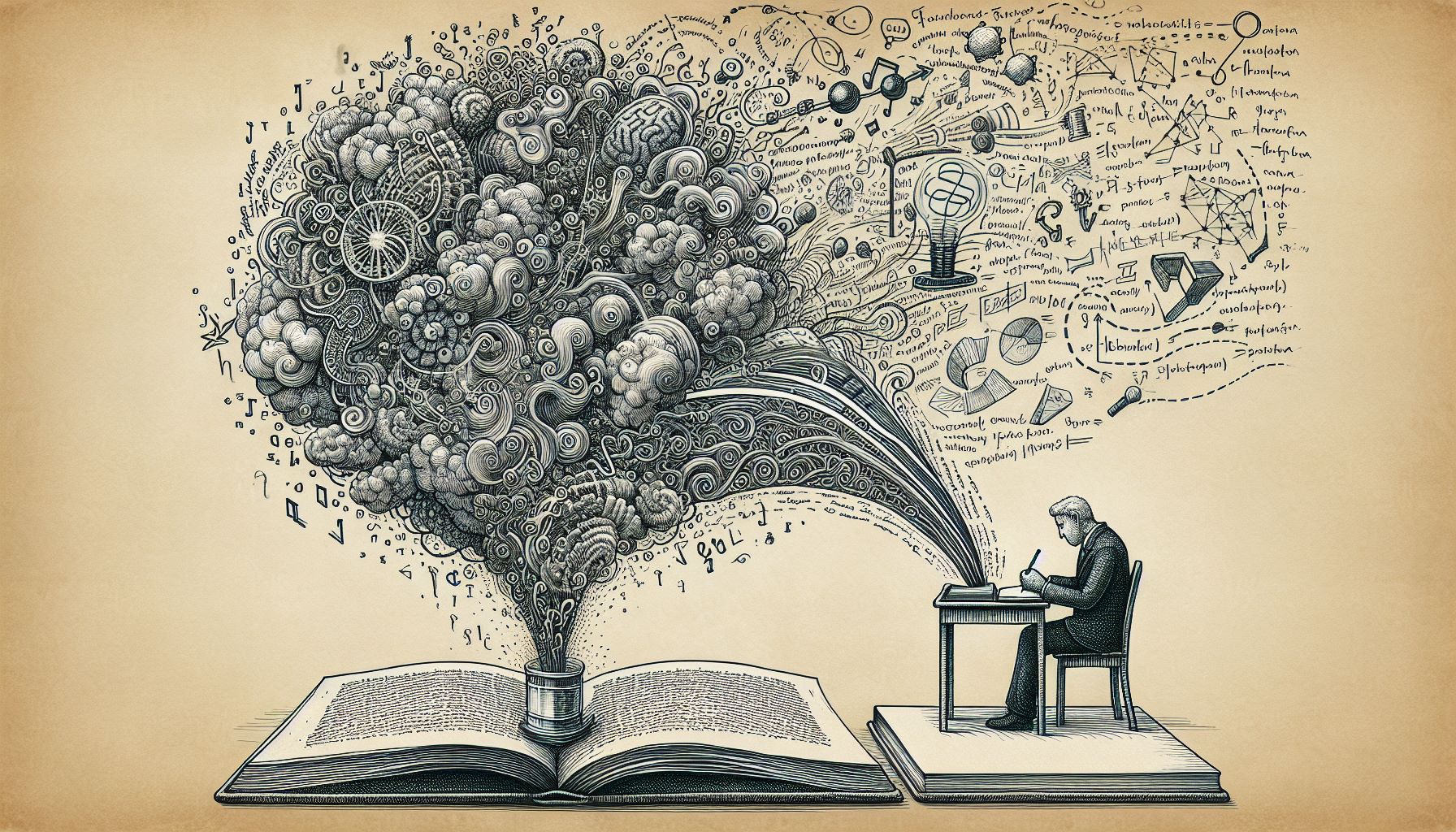Paraphrased
The Paraphrased tool allows you to rephrase and rewrite your text, ensuring that your content is unique and free from plagiarism while maintaining the original meaning. This tool is perfect for students, writers, and professionals who need to generate fresh versions of their text for academic, creative, or professional purposes. The process is quick and accurate, providing high-quality paraphrased text that is ready for use.
Share on Social Media:
Paraphrased Mastery: Essential Tips for Effective Rewriting
How can you rewrite text accurately and ethically? ‘Paraphrased’ is your target; executing it well means blending originality with the original message’s intent. This article slices through the complexity of paraphrasing, offering you the direct know-how and best practices to perfect your rewriting skills, confidently navigate the fine line of originality, and effectively use rewording tools without losing authenticity.
Key Takeaways
Paraphrasing is a critical writing skill that involves rewording text while preserving its original meaning, requiring deep comprehension and meticulous rewording to avoid plagiarism.
Effective paraphrasing involves not merely changing words but also altering sentence structure and using techniques like note-taking, organizing ideas, and maintaining cognitive distance from the source material.
Using paraphrasing tools can aid in the rewriting process, but they must be balanced with original thought, and the final content must be properly cited to ensure academic integrity.
Understanding Paraphrasing in Writing
Paraphrasing is the alchemy of transforming another’s words into your own linguistic gold while preserving the original meaning, a pivotal aspect of any writing endeavor. It’s about understanding the core of a message and expressing it anew, allowing for a seamless integration of ideas into your own narrative tapestry. The significance of this skill cannot be overstated; it’s the bridge that connects comprehension to creation, ensuring your content resonates with originality and coherence.
Yet, tread carefully, for a misstep in paraphrasing can tarnish your work with the stain of plagiarism. It demands a meticulous approach to rewording, ensuring the integrity of the original material remains unblemished.
The Mental Process Required for Successful Paraphrasing
The journey to successful paraphrasing begins in the mind. It starts with an intimate dance with the text, reading and re-reading until its meaning is fully unveiled. The process weaves through the fabric of the original work, with each step – from dissecting unfamiliar terms to summarizing the essence of the text from memory – serving as a crucial stitch in understanding.
This cognitive endeavor, which spans both analysis and synthesis, shapes the foundation upon which your paraphrased creation will rise. And once the ink dries on your rendition, a final comparison with the source ensures the original’s spirit is faithfully preserved, achieving the desirable level of authenticity.
Keeping the Same Meaning with New Words
True mastery in paraphrasing is not just about replacing words but sculpting a new form that echoes the full meaning of the original text. It’s an intricate process that requires a delicate balance, finding synonyms that fit the context, and reorganizing the structure of information to breathe new life into old ideas. The artistry lies in the ability to alter sentence construction – be it through combining or dividing thoughts or varying parts of speech – all while keeping the key message intact.
Such a reconstruction of ideas, when done effectively, not only retains the essence of the source but also enhances readability and engagement, showcasing your ability to distill and express complex thoughts with eloquence.
Crafting Your Own Rendition: Techniques for Rewording

Embarking on the path to crafting your own rendition of a text starts with the humble act of note-taking. This initial phase is where your interpretation begins to take shape, distilling the original source down to its most essential points and capturing them in your own lexicon. Here, the organization is key; headings, subheadings, and lists become the scaffolding for your ideas, ensuring clarity and structure as you carve out your narrative. With just a few notes, you can create a solid foundation for your writing, focusing on the key points and the material recorded verbatim.
Symbols, abbreviations, and visual cues act as your personal shorthand, streamlining the writing process and guiding your focus toward the most pivotal passages.
Avoiding Overuse of Quotations
While quotations can be jewels within a text, too many direct quotations can overwhelm and distract. The art of rewording is partly about understanding when to showcase a direct quotation and when to weave the essence of a message into your own fabric of words. In a few words, direct quotations should grace no more than a scant 10% of your final research paper, ensuring your voice remains the protagonist of the narrative.
Selecting which moments to quote and which to paraphrase is like choosing where to shine a spotlight – it should illuminate essential details that would otherwise lose their luster if altered.
From Note Card to Final Manuscript

The alchemy from note card to final manuscript is a transformative process where your paraphrased thoughts mature into a cohesive piece. Developing a consistent system of symbols and abbreviations on your note cards can be a catalyst for efficient rewriting. Concept maps and diagrams serve as a visual language, capturing complex relationships that may otherwise be lost in translation from brain to page.
The act of writing the paraphrase separately from the original text allows for a necessary cognitive distance, fostering an original expression of the source material and ensuring that the version accurately expresses its meaning while upholding the integrity of your academic voice.
Paraphrasing vs. Other Forms of Citation
Paraphrasing stands alongside quoting and summarizing in the pantheon of citation forms, each with a unique role in the writer’s arsenal. The choice of which to employ is akin to an artist selecting their tools – it must align with the intended impact and the nuances of the content.
Paraphrasing, in its reworded elegance, diverges from the directness of quoting and the brevity of summarizing. It demands a delicate balance, ensuring the original meaning is honored, yet freshly conveyed. And regardless of the form, the golden rule remains the same: proper attribution is the linchpin of academic integrity.
When to Paraphrase Instead of Quote
Paraphrasing tends to be the more versatile and preferred choice in the writer’s quiver, especially when aiming for a seamless weave of source material into one’s own narrative. It allows a writer to infuse their interpretation while maintaining the original’s intent, adding depth and personal analysis to the work.
The decision to paraphrase rather than quote often arises when the precise language of the source is not paramount, allowing for a more stylistically consistent and accessible delivery of complex concepts.
Summarizing: Condensing Ideas Expressed in Fewer Words

In the realm of brevity, summarizing reigns supreme, distilling expansive narratives into their purest essence. It’s the art of capturing the overarching message, the core ideas, often integrating key paraphrases or quotations without delving into the granular details.
An effective summary, or an acceptable summary, is a beacon of clarity, guiding readers through all the essential information with lucidity, unburdened by excessive verbiage.
Utilizing Paraphrasing Tools Wisely
In the digital age, paraphrasing tools, like a craftsman’s lathe, can refine and shape text into polished prose. Tools such as Rephrasing tool by PagesTools.com AI-powered paraphrasing tool stand at the forefront, boasting advanced algorithms and a variety of modes to suit different rewriting needs. Their appeal is universal, drawing in legions of students, writers, and professionals seeking to enhance their writing and introduce fresh perspectives.
But these tools are not masters of the craft; they are but instruments that require a skilled hand to direct them. They are most potent when wielded by those who have thoroughly grasped the original material and seek to explore the possibilities of rephrasing in their own words, ensuring the final content is imbued with quality and authenticity.
Choosing the Right Paraphrasing Tool
With an array of paraphrasing tools at your fingertips, selecting the right one can be crucial. It’s essential to choose a tool that offers readability, ensuring the paraphrased content is easily digestible and retains the unique essence of the source material. Moreover, ease of use should not be overlooked – the best tools are those that simplify the process, allowing your creative juices to flow unimpeded tools like PagesTools.com.
The Balance Between Tool Assistance and Original Thought
While paraphrasing tools are invaluable, they should complement rather than replace the writer’s original thought and analysis. These tools are akin to training wheels, offering support but not intended to carry the entirety of the journey. The balance lies in using the tool as a starting point, a springboard for your ideas, rather than the final destination.
It’s in the interplay of tool assistance and individual insight that the true artistry of rewriting is realized.
Legitimate Paraphrase: Ensuring Academic Integrity
In the academic sphere, paraphrasing walks hand-in-hand with integrity. It’s not enough to simply rephrase; one must also anchor their words to the original source through proper citation. This practice upholds the scholarly conversation, demonstrating the writer’s engagement with the material and offering due recognition to the original thinkers.
Whether it’s adhering to the MLA format or another style guide, accurate documentation is the hallmark of a legitimate paraphrase, serving as a bulwark against the specter of plagiarism.
Direct Quotations vs. Paraphrasing in Research Papers
In the tapestry of a research paper, the interplay between direct quotations and paraphrasing is a delicate one. Each serves a purpose: quotations capture the precise language of a source, while paraphrasing offers a new interpretation, maintaining the original’s intent. The MLA format provides a map for navigating these waters, outlining when to use quotation marks and when to embark on the creative endeavor of paraphrasing.
Both, however, demand proper in-text citations, ensuring each thread of thought leads back to its source.
Documentation and Citing Sources
Documentation is the compass that guides the reader back to the source of your paraphrased journey. MLA style, with its precise requirements, ensures that each citation is a clear signpost, whether it includes the author’s last name and page number or a simplified format for electronic sources without pages. Adhering to these guidelines is not merely a formality; it’s a tribute to the original author’s work and a testament to the researcher’s diligence and respect for the academic discourse.
Applying Paraphrasing in Different Writing Scenarios
Paraphrasing is a versatile tool, equally at home in academic halls and the bustling world of professional writing. It’s a skill that transcends disciplines, molding complex ideas into accessible narratives that resonate with diverse audiences.
In digital marketing, paraphrasing breathes life into email campaigns and advertisements, while webmasters rely on it to ensure content quality and adherence to SEO best practices.
Paraphrasing in Academic Writing

Academic writing thrives on paraphrasing; it’s the medium through which scholars converse across the ages. It allows students to convey the research of experts in a language that is distinctly their own, demonstrating a profound understanding of the material and enriching the academic dialogue.
Paraphrasing in academia is not just about avoiding the plagiarism trap but also about showcasing an analytical grasp of the source, an essential skill for any aspiring scholar.
The Role of Paraphrasing in Professional Writing
In the professional arena, paraphrasing is the key to unlocking complex information for a wider audience. It’s a translation of sorts, taking dense technical material and recasting it in terms that are clear, concise, and accessible. This skill demonstrates the writer’s mastery of the subject matter and their ability to communicate it effectively, bridging the gap between expertise and comprehension.
Summary
As we draw the curtain on our journey through the nuances of paraphrasing, we are reminded of the power it holds in shaping our written expressions. From academic essays to professional documents, effective paraphrasing is the mark of a skilled writer, one who can seamlessly integrate the insights of others into a narrative that is both authentic and engaging. It is a dance between creativity and precision, requiring a careful balance of original thought and respect for the source material. Let this exploration serve as a beacon, inspiring you to wield the tool of paraphrasing with confidence and integrity, enhancing the tapestry of your writing with every thread.
Frequently Asked Questions
What are the key steps in the mental process required for successful paraphrasing?
The key steps in the mental process required for successful paraphrasing include reading the original text multiple times, understanding its meaning, summarizing the central ideas verbally from memory, and comparing your paraphrased content with the original for accuracy. This process helps ensure that the paraphrased content accurately reflects the original text.
How can I avoid overusing quotations in my writing?
To avoid overusing quotations in your writing, limit direct quotations to 10% of your manuscript and prioritize paraphrasing, using quotations only for essential details that would lose meaning if rephrased.
When should I choose to paraphrase instead of directly quoting a source?
You should choose to paraphrase instead of directly quoting a source when the precise wording of the original is less important than the overall message, when you want to integrate the source material more smoothly into your writing, or clarify complex concepts.
What should I consider when selecting a paraphrasing tool?
When selecting a paraphrasing tool, consider its readability, uniqueness, and ease of use to craft accurate and engaging content the best tools we recommend is PagesTools.com's paraphrasing tool.
How does paraphrasing contribute to academic integrity?
Paraphrasing contributes to academic integrity by showing your comprehension of the source material and avoiding plagiarism through proper citation. This acknowledges the original author's work and supports academic honesty.